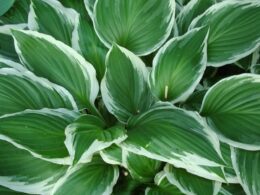Are you wondering what to do with your potted geraniums over winter? It’s important to take proper care of your plants during the colder months to ensure they survive and thrive come springtime.
With a bit of preparation and care, you can keep your geraniums healthy throughout the winter season.
First, you’ll need to prepare your geraniums for winter by cutting back any leggy or overgrown stems and removing any dead or diseased leaves. This will help the plant conserve energy and promote healthy growth in the spring.
Once your geraniums are pruned, it’s time to decide where to store them for the winter. Whether you choose to keep them indoors or move them to a protected outdoor area, providing proper lighting and watering, as well as protecting them from pests and diseases, is crucial to their survival.
With these steps in mind, you can rest assured that your geraniums will be well cared for throughout the winter months.
Prepare Your Geraniums for Winter
Get your geraniums ready for the winter season by following these simple steps.
First, start by overwintering them outdoors. As the weather gets colder, you should gradually reduce the amount of water you give your plants. This will help them to enter a dormant state and survive the winter months. Be sure to remove any dead leaves or flowers from your geraniums before bringing them inside.
Next, make sure your geraniums have adequate winter care. You should place them in a cool, dry area with plenty of sunlight. If your plants are getting too much sun, you can move them to a shadier spot. You should also be careful not to overwater your geraniums, as this can lead to root rot. Instead, wait until the soil is completely dry before watering.
Finally, keep an eye on your geraniums throughout the winter season. If you notice any signs of mold or disease, be sure to remove the affected leaves or flowers immediately. You should also be on the lookout for pests, such as aphids or spider mites. If you do spot any pests, treat your plants with a natural insecticide.
By following these simple steps, you can ensure that your potted geraniums will survive the winter and thrive come spring.
Decide Where to Store Your Geraniums
Now that you’ve prepared your geraniums for winter, it’s time to decide where to store them.
You have two options: indoor storage or outdoor storage. Indoor storage is a great choice if you have limited outdoor space or if your climate is too cold for your geraniums to survive.
Outdoor storage, on the other hand, is perfect for those who have a suitable climate and enough space to keep their geraniums outside.
Indoor Storage
It’s essential to consider indoor storage options to keep your geraniums thriving throughout the colder months. Here are four things you can do to make sure your indoor storage conditions are ideal for your potted geraniums:
-
Choose a location with ample sunlight: Geraniums need plenty of sunlight to thrive, so choose a location that receives at least six hours of direct sunlight each day.
-
Maintain a consistent temperature: Geraniums prefer temperatures between 60 and 70 degrees Fahrenheit, so try to keep the room at a consistent temperature throughout the winter months.
-
Water your geraniums sparingly: Overwatering can be detrimental to your geraniums, so only water when the soil is dry to the touch.
-
Keep away from drafts: Geraniums don’t like drafts, so make sure to keep them away from any windows or doors that may let in cold air.
By following these simple tips, you can ensure your potted geraniums stay healthy and thriving throughout the colder months. With a little extra care and attention, you can enjoy your geraniums year-round.
Outdoor Storage
If you’re looking for ways to keep your beloved geraniums healthy and blooming all year round, then outdoor storage might just be the solution you need. During the winter months, geraniums require outdoor protection to ensure they survive the cold temperatures. Geraniums are hardy plants, but they cannot tolerate freezing temperatures. Therefore, it’s essential to provide them with winter care, especially if you live in an area with harsh winters.
To protect your geraniums, you need to move them to a sheltered location, such as a garage or shed. Before storing them, cut back any dead or yellow leaves and remove any debris or pests. You can also wrap the pots with bubble wrap or burlap to provide extra insulation. It’s essential to keep the soil slightly moist, but not too wet, as this can cause root rot. You can water the plants once a month to keep them hydrated. Use the table below to help you keep track of the care your geraniums need during the winter months.
| Winter Care Checklist |
|---|
| Move to a sheltered location |
| Cut back dead or yellow leaves |
| Remove debris and pests |
| Wrap pots with bubble wrap or burlap |
| Keep soil moist |
| Water once a month |
By following these simple steps, you can ensure that your geraniums survive the winter and are ready to bloom come springtime. Remember to check on them periodically to make sure they’re doing well and adjust their care as needed. With a little bit of outdoor protection and proper winter care, your potted geraniums can thrive all year round and bring joy to your home and garden.
Can I Use the Same Method to Store Dahlias Tubers and Potted Geraniums Over Winter?
When it comes to storing dahlias tubers in pots and potted geraniums over winter, it’s important to follow different methods. While dahlias tubers require being dug up and dried before being stored in a cool, dry place, potted geraniums can be brought indoors with some pruning and reduced watering. Each plant has its own unique requirements for winter care.
Provide Proper Lighting and Watering
Now that you’ve decided where to store your potted geraniums over winter, it’s time to focus on providing proper lighting and watering.
Ensure that your geraniums are getting adequate sunlight, as they thrive in bright and direct sunlight.
Keep an eye on the soil moisture and follow watering tips to prevent over or under watering.
Additionally, monitor the temperature and humidity levels to ensure optimal growing conditions for your geraniums.
Ensure Adequate Sunlight
Ensuring enough sunlight for your geraniums during the winter months is crucial to their survival. As the days get shorter, sunlight duration decreases, and your indoor plants might not get enough light to keep them healthy.
Here are some tips to ensure your geraniums get enough sunlight during winter:
- Move your potted geraniums to south-facing windows to get the maximum amount of sunlight possible.
- If you don’t have south-facing windows, consider investing in artificial lighting specifically designed for plants. These lights mimic the sun’s rays and can provide the necessary light for your geraniums to thrive.
- Monitor your geraniums’ growth and adjust their placement or lighting as necessary. If they start to look leggy or their leaves turn yellow, they might not be getting enough sunlight.
By following these tips, you can ensure that your geraniums get the sunlight they need to survive the winter. Remember, plants are living things, and they need the right conditions to thrive. Take care of your geraniums, and they’ll reward you with beautiful blooms and foliage.
Watering Tips
To keep your geraniums healthy and hydrated during the winter months, it’s important to follow some overwintering techniques.
First, make sure not to overwater your plants. Overwatering can lead to root rot and other fungal diseases that can be difficult to treat. Instead, water your geraniums only when the soil is dry to the touch. You can check the moisture level by sticking your finger about an inch into the soil. If it feels dry, it’s time to water.
Second, be mindful of the type of soil you’re using. Geraniums prefer well-draining soil that doesn’t hold onto water for too long. If your soil is too heavy or compact, it can lead to waterlogged roots and other issues. Consider mixing in some perlite or sand to improve drainage.
By following these watering tips and overwintering techniques, you’ll be able to keep your potted geraniums healthy and thriving throughout the winter months.
Monitor Temperature and Humidity
Keep an eye on the temperature and humidity levels to ensure your potted geraniums stay happy and healthy during the colder months. Geraniums prefer temperatures between 60 to 70 degrees Fahrenheit during the day and slightly cooler temperatures at night. If temperatures drop below 50 degrees Fahrenheit, your geraniums may suffer from leaf drop or root damage.
To control the temperature, place your geraniums in a room that’s well-insulated and receives enough sunlight. You can also use a space heater to maintain the ideal temperature range.
On the other hand, geraniums prefer moderate to high humidity levels. If the air is too dry, their leaves may turn yellow or brown and fall off. To monitor the humidity, you can use a hygrometer or simply mist the leaves with water regularly.
By keeping a close eye on the temperature and humidity, you can ensure your potted geraniums survive the winter and bloom again in the spring.
Protect Your Geraniums from Pests and Diseases
Make sure your geraniums stay healthy by keeping an eye out for any potential pests or diseases. Preventive measures are crucial to ensure that these issues don’t arise.
Inspect your plants regularly and remove any dead leaves or flowers that may attract insects or fungus. Also, avoid overcrowding your potted geraniums as this can lead to poor air circulation and increase the risk of disease.
Common pests that may affect your geraniums include spider mites, aphids, and whiteflies. To prevent these pests from landing on your plants, you can use sticky traps or insecticidal soap. If you notice any signs of infestation, such as yellowing leaves or webbing, take action immediately to prevent the pests from spreading to other plants.
In addition to pests, diseases can also pose a threat to your geraniums. To avoid diseases such as gray mold or bacterial leaf spot, make sure to water your plants at the base instead of on the leaves. Also, avoid overwatering and make sure your soil is well-draining to prevent water from sitting in the pot. If you notice any signs of disease, such as brown spots or wilting, remove the affected leaves or flowers promptly to prevent further spread.
By taking these preventive measures and monitoring your geraniums regularly, you can protect your plants from pests and diseases and ensure that they stay healthy throughout the winter season. Remember to always wash your hands and tools before and after handling your plants to prevent the spread of any potential diseases. With proper care, your potted geraniums can thrive and bring a touch of beauty to your home all year round.
Bringing Your Geraniums Out of Winter Storage
Now that you’ve protected your geraniums from pests and diseases, it’s time to start thinking about bringing them out of winter storage. As the weather warms up, you’ll want to gradually reintroduce your plants to the outdoors.
Start by moving them to a cooler, shaded area for a few hours a day, gradually increasing their exposure to sunlight and warmth.
Once your geraniums are fully acclimated to the outdoors, you’ll want to assess their condition. Check for any signs of damage or disease, and prune away any dead or damaged branches or leaves.
This is also a good time to repot your geraniums if they have outgrown their current containers. Use a well-draining soil mix and a pot that is slightly larger than their current one.
When repotting, be sure to remove any dead or damaged roots, and gently loosen the remaining ones to encourage new growth. You may also want to consider adding a slow-release fertilizer to give your geraniums a boost.
With proper care and attention, your geraniums will thrive throughout the growing season.
Frequently Asked Questions
Can I leave my geraniums outside during winter?
If you’re wondering whether you can leave your geraniums outside during winter, the answer is that it depends on where you live. Geraniums are native to warm climates and can’t tolerate frost, so if you live in an area where temperatures regularly dip below freezing, you’ll need to take steps to overwinter your plants.
Outdoor geranium care during winter involves bringing your potted geraniums indoors and placing them in a cool, dark place where they can go dormant until spring. Make sure to cut back the foliage and water the plants sparingly to prevent them from drying out.
With the right care, your geraniums will survive the winter and thrive again come springtime.
How often should I water my geraniums during winter storage?
During the winter months, it’s important to find the right balance when it comes to watering your potted geraniums. Watering frequency is key, as you don’t want to overwater or underwater them.
It’s best to let the soil dry out slightly between watering, but not to the point where it becomes bone dry. Using a moisture meter can help you determine when it’s time to water.
Keep in mind that your potted geraniums will need less water during the winter months than they do during the growing season. Finding the right balance for soil moisture will help ensure the health and longevity of your geraniums during winter storage.
Can I prune my geraniums before storing them for winter?
To ensure that your potted geraniums stay healthy over winter, it’s a good idea to prune them before storing them. Pruning has numerous benefits, including promoting new growth and improving the overall shape and appearance of the plant.
To prune your geraniums, use a clean pair of shears to trim away any dead or damaged foliage. You can also cut back any excessively long stems to encourage bushier growth.
Be sure to leave some foliage on the plant, as this will help it continue to photosynthesize and store energy for the winter months. By following these pruning techniques, you can help your geraniums survive the winter and thrive come springtime.
How do I know if my geraniums have pests or diseases?
If you notice something strange about your geraniums, it’s likely that they have pests or diseases. Pest identification is essential to determine the treatment methods to use.
Look out for any holes in the leaves, sticky residue, or any insects crawling around the plant. If you suspect a pest infestation, isolate the plant and treat it with insecticidal soap or neem oil.
Diseases, on the other hand, are best prevented through proper management techniques. Ensure that you provide adequate air circulation, avoid over-watering, and maintain proper hygiene around the plant.
If you notice any signs of disease, such as yellowing leaves or black spots, remove the affected parts and dispose of them properly. Remember to always wear gloves when handling plants to protect yourself from potential harm.
When should I bring my geraniums out of winter storage?
When it’s time to bring your geraniums out of winter storage, start by preparing the soil. Make sure it’s loose and well-draining, and if necessary, add some organic matter to improve its fertility.
Once your soil is ready, it’s time to fertilize your geraniums to give them the nutrients they need to grow healthy and strong. A balanced fertilizer with equal amounts of nitrogen, phosphorus, and potassium is best for geraniums. Apply it every two weeks during the growing season, and be sure to follow the manufacturer’s instructions for the proper dosage.
With a little preparation and care, your geraniums will thrive and bloom beautifully throughout the summer.
Conclusion
So, you’ve successfully prepared your potted geraniums for winter and stored them in a safe place.
Now, it’s time for you to bring them out of storage and get them ready for the warmer months ahead.
Before you bring your geraniums out of storage, make sure to slowly acclimate them to the new environment by exposing them to sunlight gradually.
Once they’re fully acclimated, you can start watering and fertilizing them regularly.
Keep an eye out for any pests or diseases, and treat them immediately if you notice any signs.
With proper care, your potted geraniums will thrive and provide beautiful blooms throughout the spring and summer months.
So, get ready to enjoy the colorful flowers and wonderful aroma of your geraniums once again!









